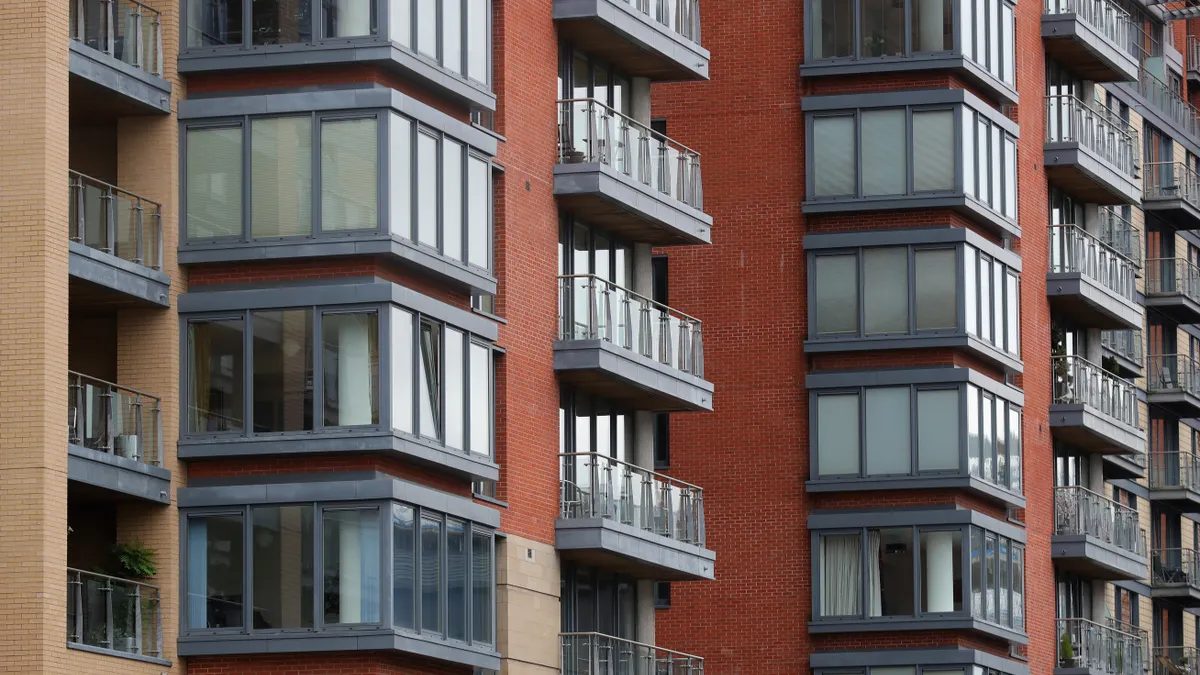Dive Brief:
-
The California Energy Commission on Wednesday voted unanimously to adopt changes to the state building energy efficiency standards that in part heavily encourage the use of electric heat pumps over gas alternatives. The state updates the code every three years. If later approved by the California Building Standards Commission, the changes will apply to all newly built or renovated residential and nonresidential structures beginning Jan. 1, 2023.
-
The vote follows building decarbonization action in dozens of California cities — including Berkeley, San Francisco, San Jose and Oakland — some of which have taken even more clear-cut steps to prohibit natural gas infrastructure in certain new buildings and make electric appliances standard.
-
The updated code also has provisions for adding solar power and battery storage features to many new structures and establishes "electric-ready" requirements for homes. According to estimates the commission shared, over a 30-year span the revamped code would provide a greenhouse gas (GHG) emissions reduction equivalent to taking 2.2 million cars off the road for a year.
Dive Insight:
Around one-quarter of California's GHG emissions can be traced to residential and commercial buildings. In recent years, as cities have sought to meet climate action goals, some have enacted policies intended to stop the use of natural gas in new building projects. Berkeley, for example, banned natural gas infrastructure in new low-rise residential buildings; the measure received strong pushback from the natural gas industry, but a judge recently dismissed a challenge against it in federal court.
The state policy the energy commission approved this week is not a ban, as it maintains some element of choice for builders. Energy efficiency baselines assume the use of cleaner, more efficient electric pumps for space or water heating. While the state will not mandate use of that technology, if a builder opts not to implement it, then it would have to make other costly energy efficiency improvements elsewhere in the building.
In the future, the state could move to ban gas in buildings altogether or to require electric appliances, said Panama Bartholomy, executive director at the Building Decarbonization Coalition. With the latest code update, the commission is "basically sending a pretty clear signal to the market about where California is going, while giving the market some time to adjust and build up the supply chain," he said.
Bartholomy credits cities with prompting this first-of-its-kind statewide action on electric heat pumps.
“City action has forced the state's hand. Right now, you have a patchwork of regulations across the state, with builders and installers and manufacturers facing different codes and different requirements in sometimes neighboring communities, and they hate that,” he said. “So I think the city action and the city leadership has been the biggest forcing function in this effort.”
Some cities in California will continue to have stronger requirements than the state. And it remains to be seen whether California’s example will prompt statewide actions elsewhere in the U.S., or whether municipalities will drive change with local ordinances. Some experts noted that other jurisdictions may soon surpass California in terms of how far their building code updates go to reduce emissions. New York, for instance, where buildings contribute about 30% of the state's direct carbon emissions, is on track to finalize a Carbon Neutral Building Roadmap later this year.
The California vote came as the state battles extreme weather, such as droughts and wildfires, linked to climate change. Earlier this week, the U.N. Intergovernmental Panel on Climate Change, or IPCC, released its latest report on the planet’s rapidly rising temperature, stating it's "unequivocal" that human influence has warmed Earth and its atmosphere.
“This week’s IPCC report shows we need to stop burning fossil fuels immediately,” said Denise Grab, manager on the Rocky Mountain Institute’s Carbon-Free Buildings team, adding that California's updated code “doesn’t get us all the way there,” but it takes a major step forward.
To take effect, the code needs the approval of the California Building Standards Commission, which is scheduled to consider it in December. Logistics over the next year or so to prepare for the change will include developing modeling software and training contractors and builders, Grab said.












